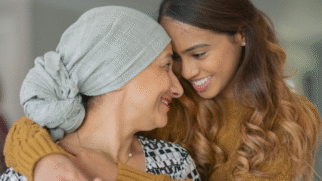National polling: Low awareness of Medicare’s Extra Help program points to need for more education
A recent national poll from the PAN Foundation finds that most adults in the U.S. have either never heard of the federal Medicare Part D Low-Income Subsidy Program, also known as the Medicare Extra Help program, or don’t know what it does.
Key findings include:
- More than 4 in 10 respondents (44 percent) have never heard of Medicare’s Extra Help program.
- Nearly half of all respondents who are over the age of 65 (49 percent), have incomes under $50,000 (47 percent), and are Black (46 percent) have never heard of the Extra Help program.
- More than 2 in 10 respondents (25 percent) have heard of the Medicare Extra Help program but don’t know what it does.
- More than 1 in 3 respondents (33 percent) don’t know which agency administers the Medicare Extra Help program.
- 6 in 10 respondents (59 percent) don’t know what the income eligibility level the Medicare Extra Help program is expanding to in 2024.
“As a leading advocate for an expansion of this program for many years, the PAN Foundation is excited to see Medicare’s Extra Help program expand its income eligibility criteria in 2024 as a result of the 2022 Inflation Reduction Act, giving more access to medications for those who are economically insecure,” said Amy Niles, Chief Advocacy and Engagement Officer at the PAN Foundation. “However, these findings reinforce the need for more patient education and outreach about this program. If patients who are eligible for the program don’t know about it, they won’t apply for and benefit from it. And while we encourage the federal government to increase patient outreach and education efforts around Extra Help, we at the PAN Foundation will do our part to ensure patients, caregivers, and healthcare professionals know how the program works and could benefit those in need.”
The Medicare Extra Help program, run by the Social Security Administration, helps people enrolled in Medicare Part D pay for the monthly premiums, annual deductibles, and copays related to their prescription medications. By expanding the income eligibility criteria for patients with incomes of up to 150 percent of the federal poverty level starting on January 1, 2024, more patients who struggle to afford the healthcare costs related to their prescription drugs will benefit from the program. But increased efforts to ensure more people are aware of the program are needed.
Additional resources:
- PAN’s position: Enhance the Medicare Part D Extra Help program
- Medicare Part D Extra Help education hub
- Everything you need to know about Medicare reforms
Polling methodology: This poll was conducted by Morning Consult on behalf of the PAN Foundation between November 1-2, 2023, among a sample of 2,201 adults. The interviews were conducted online and the data were weighted to approximate a target sample of adults based on age, gender, race, educational attainment, region, gender by age, and race by educational attainment. Results from the full survey have a margin of error of plus or minus 2 percentage points.
About the PAN Foundation
The PAN Foundation is an independent, national 501 (c)(3) organization dedicated to helping federally and commercially insured people living with life-threatening, chronic, and rare diseases with the out-of-pocket costs for their prescribed medications.
Since 2004, we have provided more than 1.1 million underinsured patients with $4 billion in financial assistance. Partnering with generous donors, healthcare providers and pharmacies, we provide the underinsured population access to the healthcare treatments they need to best manage their conditions and focus on improving their quality of life. Learn more at panfoundation.org.
